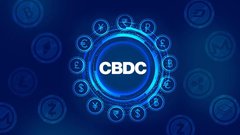State Duma did not rule out the introduction of a bill on the digital ruble by the end of the year
3 minutes
Beginner
The process of launching a digital national currency in Russia may begin in the last days of December. However, market participants still do not know how much it will cost them to implement the new form of the ruble.
By the end of the year, a bill on the digital ruble may be introduced to the State Duma, according to the head of the financial committee, Anatoly Aksakov, as reported by "Kommersant". In the opinion of the authorities, the new form of national currency is necessary for the country's economy, and therefore its development is progressing at a rapid pace.
During 2022, the Central Bank, along with 15 banks including Sberbank, VTB, Gazprombank, Promsvyazbank, Alfa-Bank, Rosbank, and others, conducted testing of operations with the digital ruble. The pilot project involved opening and topping up digital wallets, transfers between citizens, including using mobile banking applications, and payment for goods and services.
In April 2023, testing of operations with a real digital ruble will begin, initially with a limited circle of clients. Eventually, according to representatives of the Central Bank, all banks will provide their clients with the opportunity to work with the digital ruble. Currently, the option of implementing the digital ruble is being considered, in which a wallet is opened for the client on the Central Bank platform, and the credit organization acts as an intermediary.
At the end of September, the Central Bank of Russia published a draft of a new chart of accounts for credit organizations, which included new accounts for recording the movements of the digital ruble that banks will be required to reflect starting from 2023.
At the same time, the Central Bank was unable to specify the amount that banks will have to spend to connect to the service of wallets with the digital ruble. "At present, an assessment is being made of the cost of the platform and the phased increase in capacity, taking into account the projected indicators of appointment in terms of the number of transactions," the regulator explained.
Bankers are also not yet ready to assess the costs of introducing a digital national currency, according to the article. According to sources cited in the publication, credit organizations are currently determining the amount of necessary equipment and software. In unofficial conversations, bankers note a number of problems that could significantly slow down the process of introducing the digital ruble and make it noticeably more expensive, the article says.
The most serious problem is that the information security requirements have not yet been defined. Banks' expenses to ensure system security could amount to billions of rubles if the current requirements are increased.
This problem currently prevents market participants from receiving clear algorithms for connecting even to the already tested service. In addition, the uncertainty with the protection class leads to another problem - banks do not know what budget they should allocate for the implementation of the digital ruble in 2023.
Bankers say that in the long term, a problem for the development of the digital ruble could be the fact that it is based on blockchain technology. When operations are in small numbers, there are no difficulties. But when the account of digital rubles reaches trillions, and the number of operations with them reaches billions, there may be a need for a significant increase in the server park and their capacity for storing blockchain data.
Earlier, the head of the Russian Union of Industrialists and Entrepreneurs (RSPP) Alexander Shokhin stated that the introduction of the digital ruble needs to be accelerated. In his opinion, Russia should not lag behind other countries that care about national sovereignty by introducing their own digital currencies.


